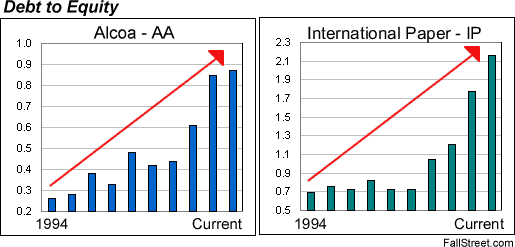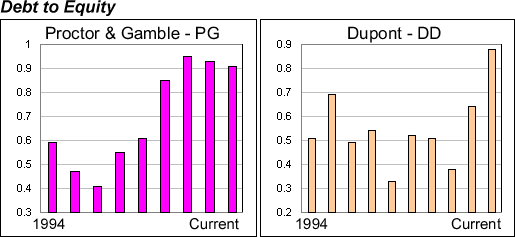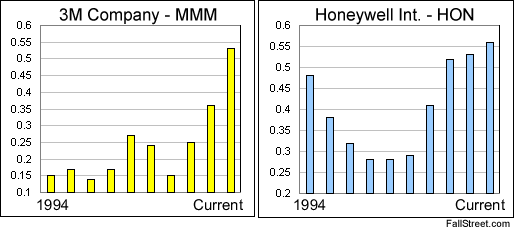June 12, 2003
Don’t Confuse Brains With a Greenspan Rally
The Fed’s Beige Book provided more evidence that the US economy is in funk, and that the US consumer – although becoming increasingly confident about what the future may hold – has not yet loosened their purse strings following the Iraq war:
“Consumer spending remained lackluster overall. Retail sales rebounded as the hostilities in Iraq subsided, but sales remained below the level of a year ago…A few Districts noted that retail sales did not pick up as much as expected after the winding down of hostilities in Iraq.”
Notwithstanding reports of soft consumer spending, the Beige Book suggested that the US economy is stabilizing. The Fed notes that “airline traffic has steadily increased in recent weeks”, “manufacturing activity remained mixed”, and that “lending activity continued to increase, mostly for refinancing residential mortgages.” No, these words do not suggest a robust economic recovery is at hand. Rather, the Fed’s overall synopsis is that the economy is steadily ‘sluggish’:
“No District report suggested that economic conditions had deteriorated since the last Beige Book.”
The only nearly universal negative in the Beige book was employment. Keeping the report largely anecdotal, the Fed did not elaborate on the ‘noticeable pickup’ in New York office jobs.
“Most District reports continued to indicate that labor markets were soft. In the Kansas City District, the pace of layoff announcements continued to ease, but layoffs continue at some large employers in the Dallas District and at some manufacturers in the St. Louis District. A few employers in Cleveland continued to report layoffs, but most indicated plans to augment or maintain their workforces. In the Atlanta District, firms are not yet hiring permanent employees but are leveraging existing staff by increasing hours and, or adding temporary personnel. In the New York District, a major employment agency specializing in office jobs reports a noticeable pickup in hiring since the last report.”
The markets cheered yesterday’s Beige book, presumably because investors feel that since things are not getting worse the Fed’s rate cut later this month can only help make things better. However, it is difficult to read too much into the markets reaction to the Beige book. Quite frankly, and judging by the different interpretations of the report, the Beige book was either good news because it showed the economy is about to rebound, or great news because it showed that the economy is not about to rebound without some help (which may mean that the Fed cuts by 50bps instead of the expected 25bps).
‘Markets cheer another expected, meaningless Fed cut’ would have been the most appropriate headline for each of the last 12 rate reductions. Perhaps this time it will be different?
Economic Recovery May Not Mean Stock Market Gains
Even if the US economy embarks upon another mini-recovery, this does not necessarily mean that the stock markets will rally by leaps and bounds. Rather, since stocks have rallied in anticipation of a recovery a strong rebound in the economy and/or corporate profits may be required in order for the current rally to simply hold.
Moreover, when the US economy begins to show signs of a rebound the markets may immediately stop fearing deflation and begin fearing a potential rise in interest rates. Mortgage rates, currently dropping by more than 20% on an annualized basis, do not need to skyrocket to mark an end to the ongoing refinancing ‘mania’. Rather, they simply need to stop falling…
Does a stable economy mean stable stocks?
Like clockwork, many have begun to warn that 2Q03 warnings season will knock stocks lower.
Obviously, if the 2Q03 warnings are bad enough investors will not be pleased. However, just as poor economic news can be disregarded in anticipation of better news tomorrow, the markets appear stable enough to overlook weak profits for another quarter in an anticipation of a late year run up in profits. I hope I am wrong -- that this way of looking at things proves inaccurate, and stocks become more attractive due to the warnings. Nevertheless, the so called ‘catalyst’ some are looking for to take stocks down a notch is unlikely to be predictable beforehand. If a Freddie upheaval, and a Texas warning doesn’t stop the rally it is difficult to know what will (other than the rally simply exhausting on its own).
In short, it is impossible to forecast what the US financial markets will do from July 2003 to December 2003. If the first half of 2003 proved anything, the US stock markets can rally based upon one word - ‘hope’ - even as the US economy shows no signs of recovery. Perhaps another half million plus people will be laid off in the second half of 2003 and the Dow will go to 10,000, or perhaps the markets crash leading into Sept/Oct? I would not invest on either proposition, but I would bet on the latter rather than the former.
Why Should Businesses Start to Invest?
Despite the fact that corporate profits improved by double digits in 1Q03, companies are not convinced that expected future profits justify increasing capital expenditures today. Furthermore, there remains the question of ‘balance sheet strength’ – a phrase that many people like to talk about but few seem to expand upon.
To note: balance sheet strength is a tricky situation to discuss not only because balance sheets were stuffed with intangibles during the 1990s, but because lower interest rates continue to permit many companies to refinance their debt. Nevertheless, the benefits of debt refinancing – much applauded by the likes of Larry Kudlow – should be placed into the context of reduced rates of profitability. For example, thanks to declining interest rates GE may be able to do some amazing things with their spread of debt today, yet the company’s interest coverage remains at roughly the same level it has been at for the last decade (2.8). As such, GE’s debt principle has not necessarily becoming more manageable (compared to earnings) simply because interest rates have declined.
Undoubtedly, a sustained uptick in corporate profits would lead to stronger corporate balance sheets, which in turn could forecast an uptick in capital spending. However, while 1Q03 was a promising quarter, it was only 1 quarter. For companies that had been gobbling up debt by record amounts for nearly a decade, 1 good quarter of earnings does not mean a heck of a lot. For example, Dow components Alcoa and International Paper have seen their debt/equity readings soar in recent years, and each company’s ratio (after 1Q03) is still at a decade high. These stats alone – paying no attention to industry forecasts - do not suggest that AA and IP are in a position to spend, spend, spend.
 |
The trend of escalating d/e readings is apparent in many Dow components. This suggests that companies have either acquired a higher tolerance for debt, or they are having difficulties managing their balance sheets. The below charts are not as striking as AA and IP, yet the trend remains: d/e readings compared to recent history are near or at highs.
 |
 |
Other Dow notables include Boeing, GE, and Eastman Kodak, which have seen their debt/equity readings more than triple since 1994. Then there is Caterpillar, Disney, and IBM, which currently have d/e readings that are nearly double 1994 levels.
These internet generated d/e readings do not suggest that a capital spending recovery is impossible, only that each companies balance sheet – paying no attention to the earnings outlook (which you could argue is worse today than in 1994) - would be better prepared for capital spending increases in 1994 rather than leading into 2004.
The news is not all bad. Rather, many Dow tech stocks (MSFT, INTC) have little or no debt, and even though HPQ’s debt/equity reading has tripled since 1994 it remains low at 0.17. Furthermore, some companies – including Johnson and Johnson and Home Depot – buck the trend (d/e readings lower or the same for much of the last decade).
Nevertheless, when looking at the Dow d/e levels alone, the argument that balance sheet leverage has been worked off after the 3-year bear market is patently false. With this in mind, consider Chuck Hill’s comments leading into this week:
“…we emphasize that this was a very different kind of recession, one brought on by a capital spending binge {or escalating d/e readings}. Until there is sufficient improvement in consumer spending to use up enough excess capacity in enough industries, business will not open the capital spending spigot much wider than the current trickle.
As we head into the final stretch of 2Q03, there do not appear to be enough signs of improvement now, or in the near future, to cause the capital spending spigot to open enough for corporate America to reach the earnings expectations for 2H03.”
It is difficult to find flaw in the above argument.
Is Greenspan a God?
Investors Intelligence notes that the number of financial newsletter editors who are "bears" is down to 16.3%, or the lowest since April 1987. Why do people become more bullish as stock prices rise? You got me.
Based upon anecdotal evidence – i.e. how excited Larry Kudlow is (he said last night that this rally is only 1/3 over) – the 1990s mania is alive and well. Apparently, all that matters when trying to earn a profit in stocks is for you to figure out that there are no other investment alternatives. Why buy bonds, money markets, or gold, when stocks are the only investment instrument to surely benefit from lower interest rates?
Getting back to reality, Greenspan cutting interest rates and/or manipulating interest rates does not make an Alcoa want to run out and borrow more money. Rather, and assuming over capacity issues are not quickly resolved, lower interest rates may simply mean the Alcoa’s refinance and try to lower their d/e levels before they take a chance acquiring and spending more principle.
In October 1987 Greenspan issued a 1-sentence statement following the stock market crash in an attempt to assure investors the Fed stood ready to inject liquidity into the financial system. It worked. In May 2003, as economic activity was slowing, the Fed issued a deflation scare in an attempt to assure everyone that the housing market would remain hot until other areas of the economy picked up. It is working…
Greenspan’s plan to push interest rates lower and inject liquidity into the financial markets until things get better is nothing new. Rather, 1987 type statements occur on a monthly basis in Japan* (the BOJ always stands ready to give money to anyone who wants it). As for Greenspan keeping the housing market aflame, in places like Australia the Greenspan type characters are terrified* of cutting rates because they fear that an already hot housing market may overheat. Greenspan may be weary of the bubbling US housing market, but for the moment he seems more concerned with deflation.
Investor’s banking on Greenspan to keep stocks motoring higher may not be paying attention to potential pitfalls if, and more likely when, Greenspan’s plan of attack fails. Nevertheless, stocks are rising so everyone making profits is a genius, and those that worry about the ‘sluggish’ economy, high d/e levels, and near record high valuations are simply out to lunch.
The logic for many investors seems to be that sitting on the sidelines for 2 or 3-years was a prudent decision, but since sidelined returns continue to slip now – and armed with the expectation of say 15% instead of 50+% annual returns - is the time to get back in the stock market. Greenspan helped suck these investors back into the game, and if the Fed Chairman wasn’t so worried about deflation he would be crying irrational exuberance.
* “Should there be a risk of financial market instability, such as a surge in liquidity demand, the Bank will provide more liquidity irrespective of the above target.” BOJ
* “The stronger than expected home borrowing figures underscored an interest rate dilemma facing the Reserve as it balances runaway household debt with a threatening global economic slump.” SMH
BWillett@fallstreet.com
All data and information within these pages is thought to be taken from reliable sources but there is no guarantee as such. All opinions expressed on this site are opinions and should not be regarded as investment advice.
Copyright © 2000-2003. FallStreet.com